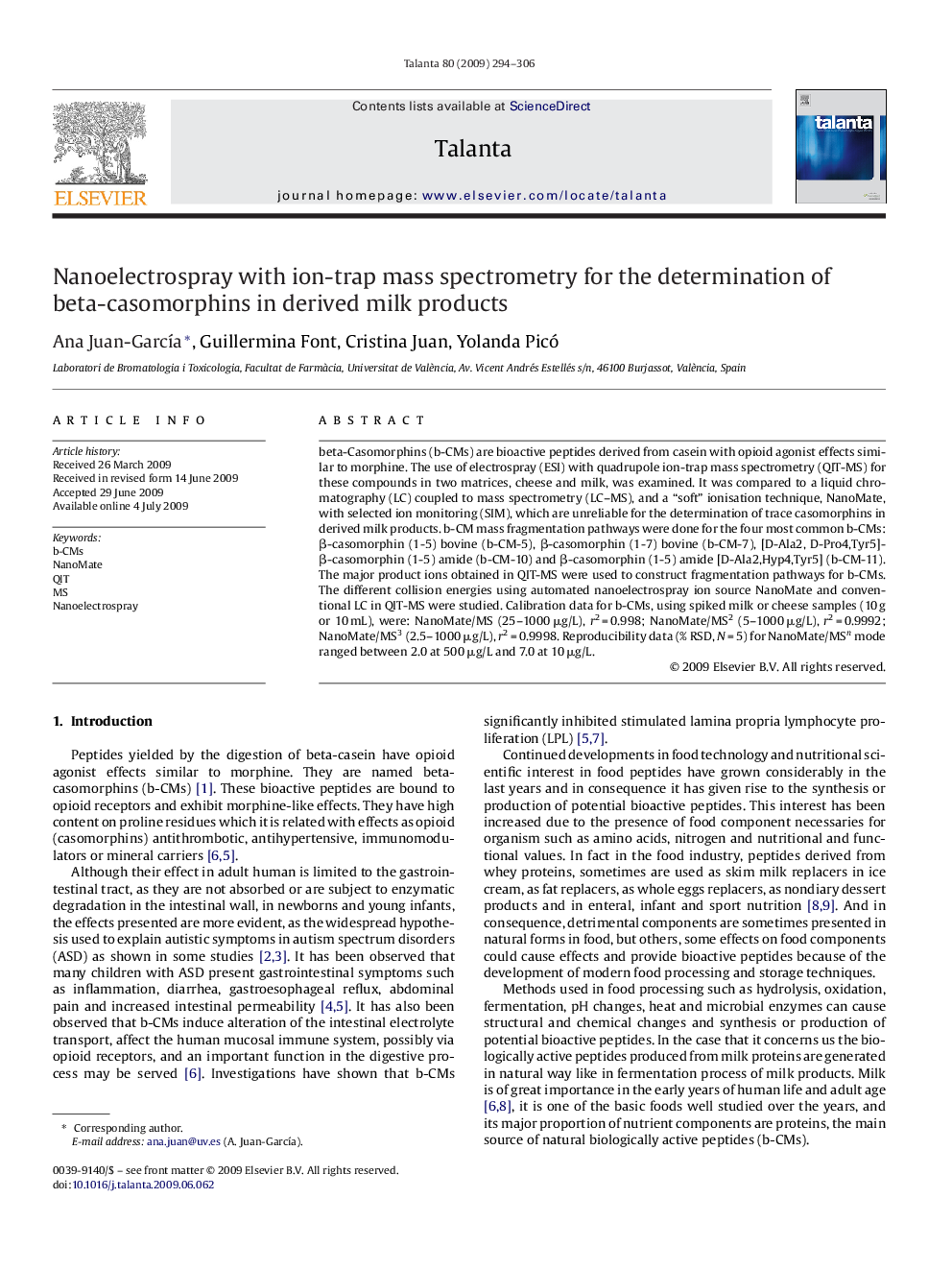| Article ID | Journal | Published Year | Pages | File Type |
|---|---|---|---|---|
| 1243681 | Talanta | 2009 | 13 Pages |
beta-Casomorphins (b-CMs) are bioactive peptides derived from casein with opioid agonist effects similar to morphine. The use of electrospray (ESI) with quadrupole ion-trap mass spectrometry (QIT-MS) for these compounds in two matrices, cheese and milk, was examined. It was compared to a liquid chromatography (LC) coupled to mass spectrometry (LC–MS), and a “soft” ionisation technique, NanoMate, with selected ion monitoring (SIM), which are unreliable for the determination of trace casomorphins in derived milk products. b-CM mass fragmentation pathways were done for the four most common b-CMs: β-casomorphin (1-5) bovine (b-CM-5), β-casomorphin (1-7) bovine (b-CM-7), [D-Ala2, D-Pro4,Tyr5]-β-casomorphin (1-5) amide (b-CM-10) and β-casomorphin (1-5) amide [D-Ala2,Hyp4,Tyr5] (b-CM-11). The major product ions obtained in QIT-MS were used to construct fragmentation pathways for b-CMs. The different collision energies using automated nanoelectrospray ion source NanoMate and conventional LC in QIT-MS were studied. Calibration data for b-CMs, using spiked milk or cheese samples (10 g or 10 mL), were: NanoMate/MS (25–1000 μg/L), r2 = 0.998; NanoMate/MS2 (5–1000 μg/L), r2 = 0.9992; NanoMate/MS3 (2.5–1000 μg/L), r2 = 0.9998. Reproducibility data (% RSD, N = 5) for NanoMate/MSn mode ranged between 2.0 at 500 μg/L and 7.0 at 10 μg/L.
